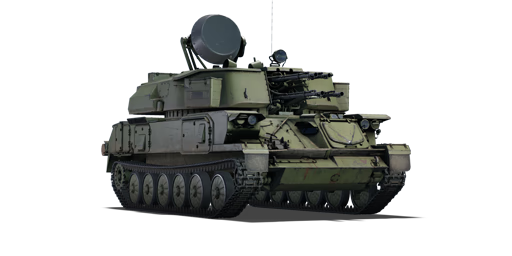



Arguably the single most iconic self-propelled anti-aircraft gun of the Soviet Union during the Cold War, the ZSU-23-4V Shilka is a force to be reckoned with. First fielded in 1965, the Shilka completely superseded its predecessor, the antiquated ZSU-57-2 by the 1970s. Notable upgrades were a radar fire control system to assist gunners in aiming the gun, a gun stabilizer to enable firing on the move, as well as the search radar itself which greatly assisted in awareness. Designed on the ASU-85 hull, the Shilka was almost fielded alongside its competitor, the ZSU-37-2 Yenisei, but the Yenisei was cancelled during a hearing and the Shilka became the backbone of the Soviet air defense suite. The Shilka served a long and illustrious career with the Soviet Armed Forces and many other militaries around the world, seeing combat across the globe. One notable use was in the Soviet-Afghan War, where Shilkas had their radars removed and additional ammunition was added and were used against enemy guerilla fighters to devastating effect.
Introduced in Update 1.63 "Desert Hunters", the "Shilka" presents a much higher rate of fire than its predecessor ZSU-57-2, and allows the user to oversaturate a given area of the sky to increase the odds of hitting an enemy aircraft. The Shilka is unlocked after the ZSU-37-2 Yenisei, its unproduced rival, and usage cases between the two differ. The Yenisei deals a heavier, crippling blow with its 37 mm cannon, but lacks the volume of fire of the Shilka to saturate an area, while the Shilka lacks comparative engagement range as well as the penetration to go through enemy armour from the side consistently. The Shilka is best used at sub-2 km ranges, when enemies have little room to manoeuvre from the sheer amount of shells being thrown in the air, and is second to none in this role.
| Belt | Belt filling | Armor penetration (mm) at a distance: | |||||
|---|---|---|---|---|---|---|---|
| 10 m | 100 m | 500 m | 1000 m | 1500 m | 2000 m | ||
| API-T/HEF-I | 51 | 48 | 36 | 26 | 18 | 13 | |
| HEF-I/HEFI-T/HEF-I/API-T | 51 | 48 | 36 | 26 | 18 | 13 | |
| API-T/API-T/API-T/HEFI-T | 51 | 48 | 36 | 26 | 18 | 13 | |












Mobility | |
|---|---|
Protection |
|---|
Firepower | |
|---|---|